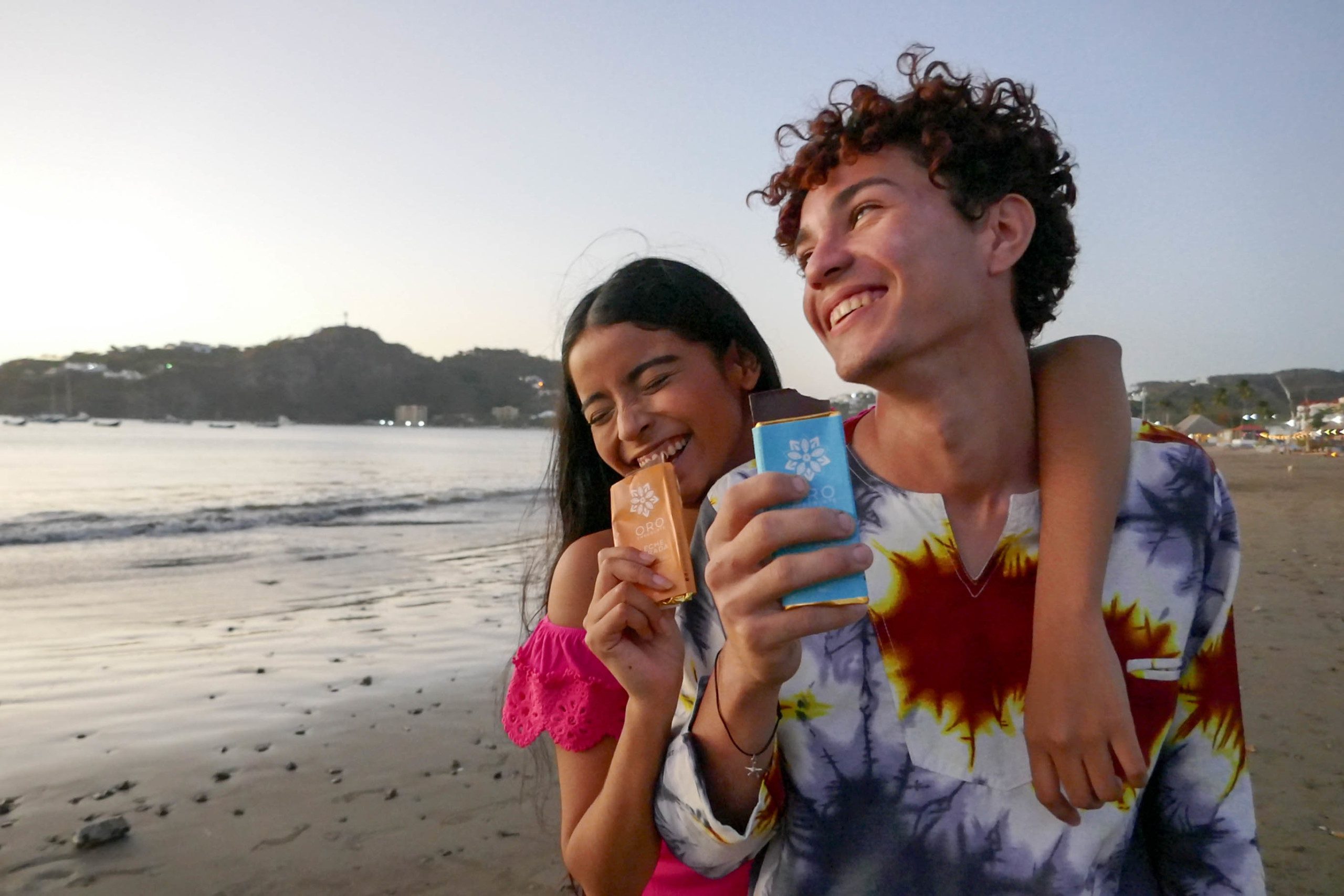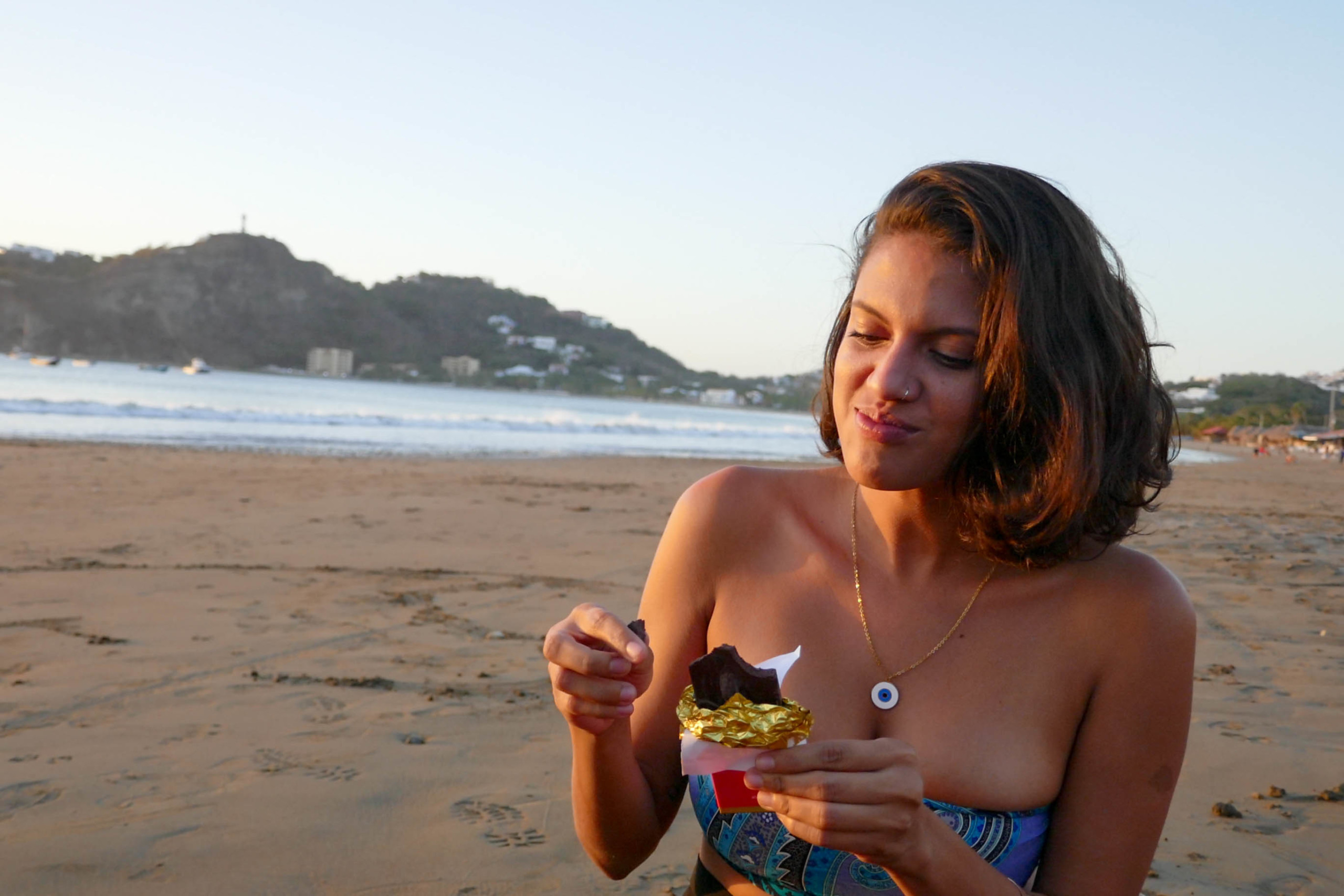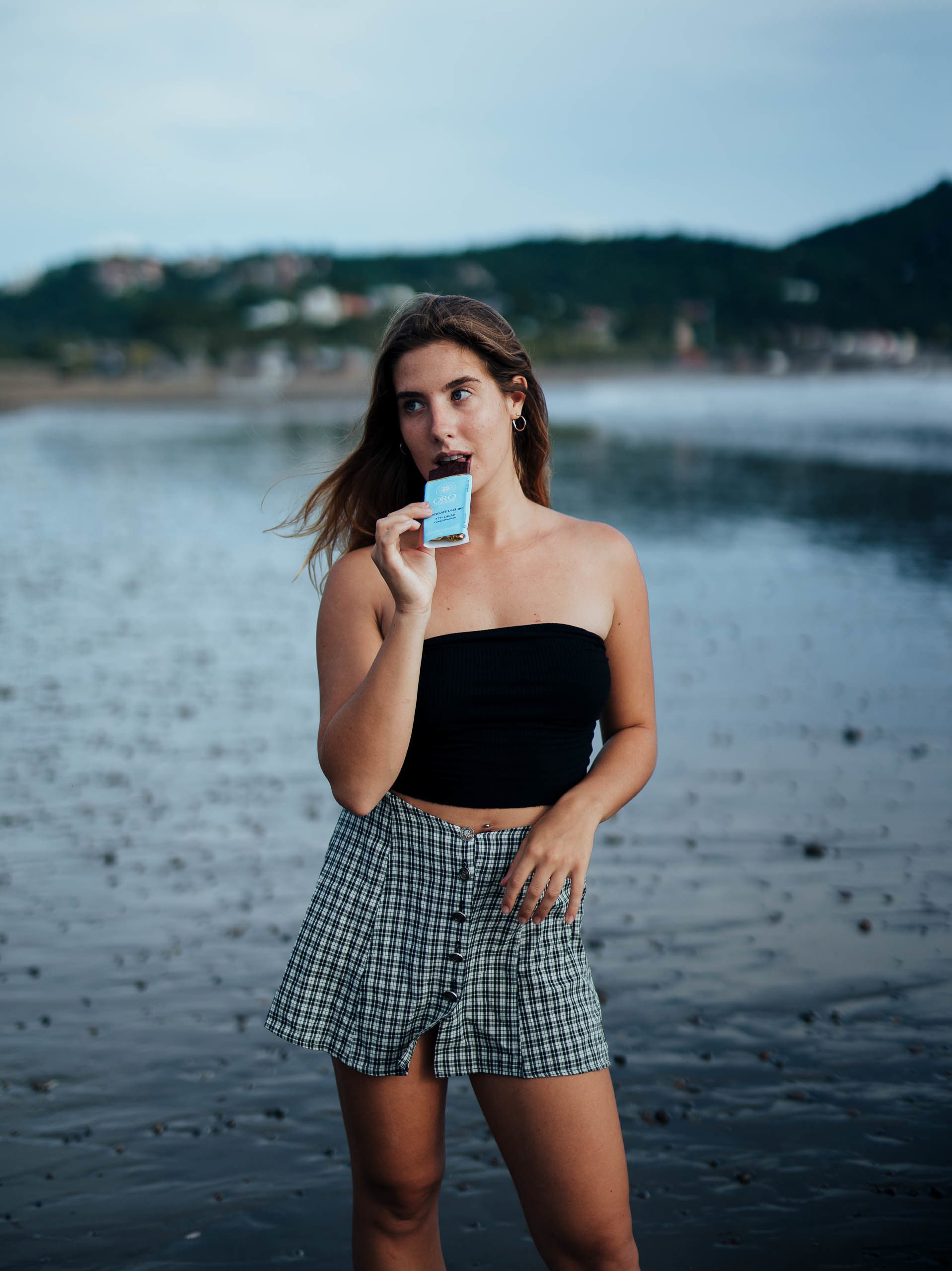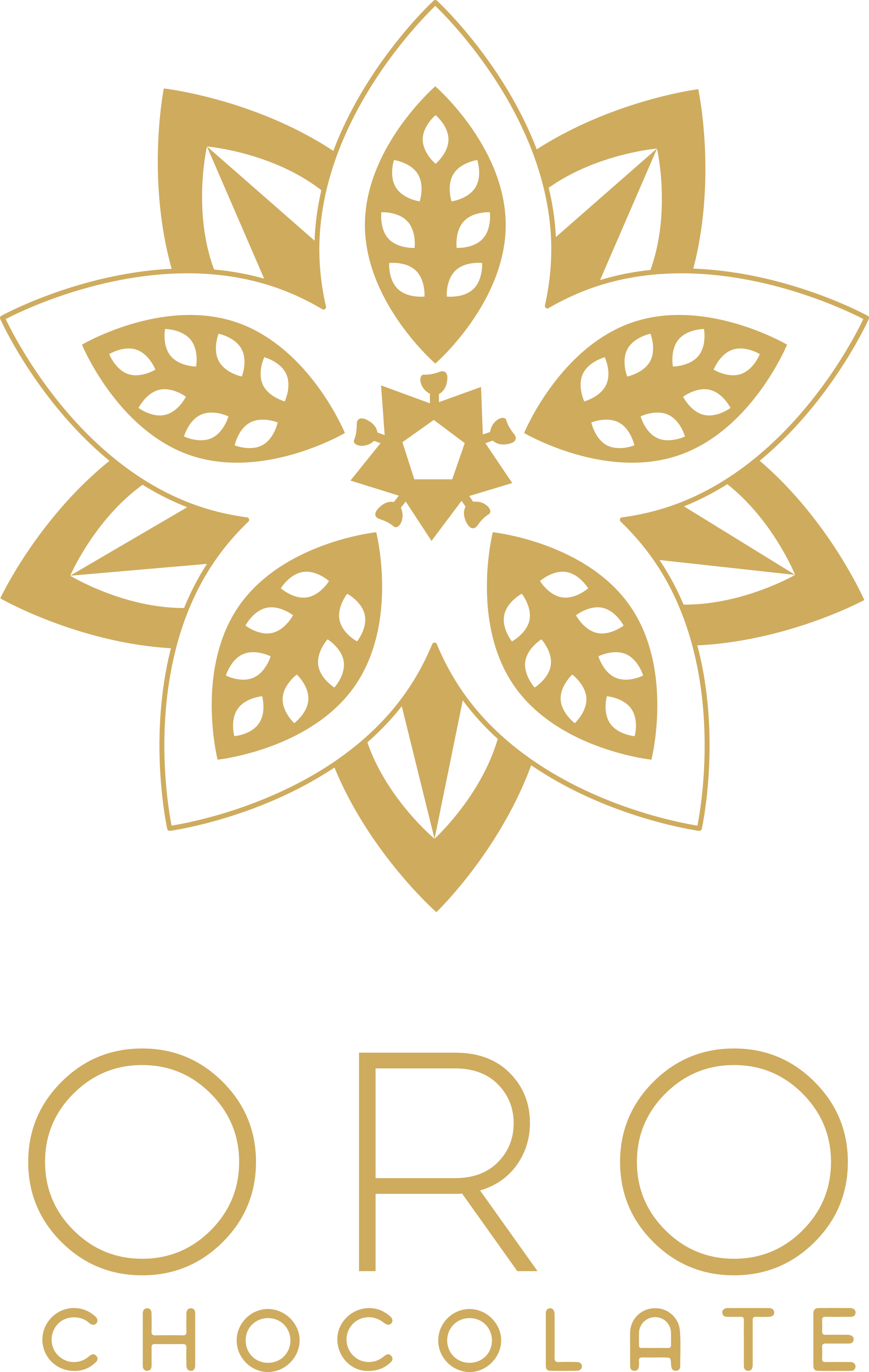FAQ
Possible Questions and Attempted AnswersCuriosity is Cool
We’re glad you made it here! This page is lengthy, so feel free to skip around and find what you’re looking for.
What’s Cacao?
Cacao is a fruit or “pod” that grows on the trunk of a tree native to Central and South America. The part of the pod used for chocolate making is the seed or bean, which is usually fermented in the pulp of the surrounding fruit prior to use. The Cacao tree is happiest growing between 20 degrees north and south of the equator in mid-elevation areas with abundant rainfall and moderate temperatures. The species has traditionally been divided into three lineages, criollo, forastero, and trinitario. Researchers continue to discover more genetic lineages of cacao.
What about ceremonial use of cacao?
Archaeologists have found remnants of cacao in ceramic artifacts in Mesoamerica (Mexico and Central America). The Mayans and the Olmecs cultivated the cacao plant and incorporated a beverage made from cacao into their culture, practices later adopted by the Mexicans. Cacao is depicted in Mesoamerican art as a tree of life, and the beverage a food of the gods. The frequency of these images, as well as the glyph associated with cacao, indicates that the plant was central in these pre-colonial cultures. Throughout the process of Spanish colonization in the Americas, specific understanding of how cacao was used ceremonially has been lost. However, even the conquistadors recognized the significance of the plant and brought it back to Europe. What record is available of the earlier use of Cacao suggests that it was a drink shared especially by the ruling elite in these civilizations, drank as a part of social rituals and customs. It may have also been used to make offerings to royalty or gods, or during celebrations.
Today we find contemporary spiritual seekers using cacao in a variety of contexts including yoga practice, dance, meditation, musical performance, flow state, and a whole host of intentional activities.
Health benefits of cacao?
We eat cacao every day in many different forms and can see how it positively affects our lives and overall health. We aren’t doctors, we’re chocolate makers, but there have been a number of recent studies exploring the medicinal and health effects of consuming cacao. Some of these include:
- Boosts Serotonin levels in the brain, calming hormones during PMS cycles.
- Lowers cholesterol levels
- Contains anti-inflammatory flavonols that prevent heart disease.
- 700 antioxidant compounds known as Polyphenols that can prevent the hardening of the arteries and premature aging.
- Lowers the stress hormone Cortisol.
- Improves skin texture. Studies found that women who eat cacao with at least 326 mg of flavonols per day had better skin texture, improved microcirculation, increased oxygen saturation, and improved skin hydration.
- Improves cognitive function and could prevents Alzheimer’s. A Harvard study showed that drinking two cups of cacao a day improved memory and increased blood flow to the brain.
- High in healthy monounsaturated fats.
Of course, there remains much to be discovered and we encourage you to do your own research and come to your own conclusions.
Here are a few resources for further reading on the topic:
- Nature’s Path: The Health Benefits of Cacao
- Medical News Today: Health benefits and risks of chocolate
- U.S. National Library of Medicine: Cocoa and Chocolate in Human Health and Disease
- The Harvard Gazette: Cocoa for pleasure — and health?
- Loma Linda University: New studies show dark chocolate consumption reduces stress and inflammation, while improving memory, immunity and mood
- Well Good: PSA: EATING CACAO BEFORE BED IS A *REALLY* GOOD IDEA
What’s special about Nicaraguan cacao?
The Heirloom Cacao Preservation Fund, an initiative of the Fine Chocolate Association and the United States Department of Agriculture, have identified the Northern Mountains of Nicaragua as being one of a select few regions worldwide containing heirloom cacao trees. Old growth cacao trees have genetics perfectly adapted to the soil and climate of the region. These landrace cacao strains have developed quality flavor profiles unique to Nicaragua. Being heirloom varieties, they do not require artificial inputs to grow abundantly, and grow wild in their natural habitat in symbiosis with the other native species of the mountainous rainforests of Nicaragua.
Has Nicaraguan cacao won any awards?
In the 2018 International Chocolate awards, Omnom, an Icelandic bean to bar chocolate maker, won overall best in competition for their Milk of Nicaragua chocolate bar. The cacao for those chocolate bars was sourced from the same region where we get our beans. Cacao from this region won more medals at the 2018 international chocolate awards than the entire country of Peru. An article in Forbes highlighting bean to bar makers in the USA proudly features the award-winning Nicaragua 68% chocolate bar by the French Broad Chocolate Company. Don’t take our word for it, many others agree that Nicaraguan cacao is special.
What does our cacao taste like?
The flavor profile of carefully fermented Nicaraguan cacao is unique in the world. The taste of chocolate made with these beans is complex and multi-layered with a distinct unfolding of fruity and floral notes that balance the mid-tones of honey and nut. An innumerable amount of elements influence the final taste of the chocolate- soil conditions, weather fluctuations, other plants growing around the tree, fermentation cycles, drying, added ingredients, and so on. Like coffee or wine there is an increasing capacity for the art and science of tasting chocolate. It’s something we’re still learning about and happily practice every day.
Why does single origin matter?
Single Origin means all the beans have been sourced from the same country and more specifically from within the same region. A region is defined by having similar soil and climate conditions that give rise to specific flavors. Similar to wine and coffee growing regions throughout the world, certain regions are emerging in the bean to bar chocolate world as having exceptional quality harvests and consistency of flavor.
Cacao beans will differ greatly from one farm to the next, and getting beans from the same source will contribute to a more refined taste in the final product. Post-harvest processing like fermentation and drying practices can create large variances in the final flavor as well.
Single origin allows for more transparency with the farmers, because a close connection is formed with the growing region. This means we have a firsthand view of the farmers practices and their social, economic and environmental impact. This is particularly important in the direct trade model of bean to bar chocolate making.
What are some of the issues with “Big Chocolate”?
The Chocolate Industry has a gnarly past and present. We put the lion’s share of our energy into finding solutions, but to do that effectively we have to be aware of the problems. Like coffee and sugar, chocolate is a widely consumed product, with deep roots in global culture. After its first passage to Europe, the rising demand for chocolate lead to it becoming an early export product. Its economic value meant a lot of effort went into producing thousands of tons of chocolate during industrialization, and many people were enslaved to work on cacao plantations all over the world.
Today, about 70% of the world’s chocolate comes from Ghana and the Ivory coast, far away from its natural habitat. Thousands of acres of African forest have been destroyed to make way for cacao plantations. The genetic hybrids grown in these regions require intensive irrigation and chemical inputs sacrificing quality for quantity. Industrial scale production employs inhumane labor conditions and complete lack of transparency.
Since a BBC documentary released in 2000 exposed the horrific frequency of child labor on the Ivory Coast, big brands attempted to introduce programs to improve the conditions, but unfortunately, it has gotten worse. There was a 21% increase in child labor in cacao production between 2009 and 2014.
Demand for chocolate continues to grow globally and despite increases in production, farmers are paid less and less. When you buy a cheap chocolate bar, you are buying into a billion-dollar industry that gives almost no return to the source of the cacao.
Part of the huge demand for chocolate comes from its cultural significance- Easter, Christmas, Halloween, Valentine’s day, to name a few, have all become occasions with strong connections to cheap chocolate. When you account for the hidden costs of deforestation, child slave labor, and widespread increasing poverty, Big Chocolate is exorbitantly expensive.
Our bean to bar chocolate provides an alternative.
Why should I pay more for bean to bar craft chocolate?
Our farmers are paid above commodity prices for their crops. We buy our beans from Ingemann Fine Cacao, who is dedicated to paying some of the highest farmgate prices in the country, and as such we pay more for cacao. In order to produce fine chocolate, a huge amount of care and attention goes into the fermentation and drying process, which is simply unattainable at an industrial scale. This process requires trained specialists, it’s not cheap or easy. Our whole production is a micro-batch, hands on artisanal process involving many steps, each one carefully executed, monitored and quality controlled by human beings working in dignified conditions.
All of our ingredients are chosen for the highest quality and most direct route from the farmer. We even grow some of the ingredients ourselves at our farm, Rancho Regeneracion. We ensure there are better than fair trade human labor practices behind all of our ingredients. We all deserve to work in a fulfilling and regenerative environment and we are committed to creating more of this in the world.
All of our equipment is custom made, designed specifically for small-scale chocolate production. Our packaging is hand-produced by a local Nicaraguan company. Being one of a few country of origin producers, our costs also involve climate controlled air freight to deliver small batches to retail locations.
As you can imagine, all of this care, attention, and paying above market rates adds up; and it’s not powered by rainbows and unicorns alone. It costs money, substantially more than industrialized slave labor. By paying more for bean to bar chocolate, you are casting a vote with your money. It might be the strongest vote we have.
Moreover, bean to bar chocolate is akin to other finer things in life like fine wines, spirits, cigars, and food. We have become accustomed to a high price tag for these products, because we know it is the quality and attention to detail we are paying for. To be able to enjoy some of the best cacao in the world, a unique chocolate eating experience, for $8-14 seems like a wise investment.
Are you certified organic? Fair trade? Direct trade?
Third-party certifications are a good idea and in theory are meant to be tools for consumers to make informed decisions while navigating a sea of products. A third-party certification seal can add a perceived sense of legitimacy to claims being made about the product.
In order to receive an organic or fair trade certification, a third-party company must be hired, which is different than the agency which issues the certificate. This involves an initial site visit, perhaps some lab tests, interviews, and annual inspections. All this sounds great, however, there are significant costs associated with each of these steps that must be assumed by the farmer.
Nicaragua is one of the poorest countries in the Western hemisphere and the region we buy our cacao from in La Dalia, Nicaragua is one of the poorest regions in Nicaragua. The small-scale cooperative of farmers we work with are not in a financial position to pay for a company to come verify their operation. In an increasing array of seals and certifications, it feels confusing and unclear as to what any of them actually mean anymore and has started to feel like a “pay to play” arrangement.
In our research of the requirements to receive organic and fair trade certifications, we learned that in our way of doing business, we hold ourselves and our farmers to higher standards than any agency or seal that we know of. As such, we prefer to communicate with transparency about our practices, processes and how we go about doing business. We appreciate that you care and that you’re curious, we all need to look more closely at where our food comes from.
Having made many trips to the farms ourselves, we know the people and the place more intimately than any auditor ever could. It’s about Hardin and his family. They’re good people and they care about reforestation. We get to witness the organic chemical-free proliferation of cacao in the Northern regions of Nicaragua. There isn’t a need for non-organic practices because nature does most of the work here. The farmers prefer it that way because it means less work and inputs for them. Everyone has small-scale plots that are personally tended by hand with no industrialized machinery in sight. There’s simply no logical reason to use chemicals.
We know our farmers are paid more for their cacao than any other raw cacao sold in all of Nicaragua. The farmers themselves came up with the price they felt was fair and would do their work and lives justice, there was no negotiation, that’s the price they’re paid along with the technical training and community enhancement support. This goes far beyond any fair trade or direct trade practices we’re aware of.



Follow Us
Contact
Phone
Address
Dentro El Pacifico Hotel, Barrio Talanguera
San Juan del Sur, Nicaragua
